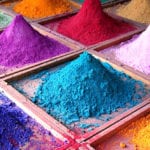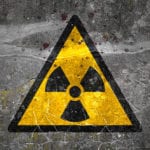 Humans
Humans  Humans
Humans  Movies and TV
Movies and TV The 10 Most Heartwarming Moments in Pixar Films
 Travel
Travel Top 10 Religious Architectural Marvels
 Creepy
Creepy 10 Haunted Places in Alabama
 History
History Top 10 Tragic Facts about England’s 9 Days Queen
 Food
Food 10 Weird Foods Inspired by Your Favorite Movies
 Religion
Religion 10 Mind-Blowing Claims and Messages Hidden in the Bible Code
 Facts
Facts 10 Things You Never Knew about the History of Gambling
 Weird Stuff
Weird Stuff 10 Cool and Creepy Facts about Collecting Tears
 Humans
Humans The Ten Most Lethal Gunslingers of the Old West
 Humans
Humans Ten Historic Men Who Deserve Way More Credit Than They Got
 Movies and TV
Movies and TV The 10 Most Heartwarming Moments in Pixar Films
 Travel
Travel Top 10 Religious Architectural Marvels
Who's Behind Listverse?

Jamie Frater
Head Editor
Jamie founded Listverse due to an insatiable desire to share fascinating, obscure, and bizarre facts. He has been a guest speaker on numerous national radio and television stations and is a five time published author.
More About Us Creepy
Creepy 10 Haunted Places in Alabama
 History
History Top 10 Tragic Facts about England’s 9 Days Queen
 Food
Food 10 Weird Foods Inspired by Your Favorite Movies
 Religion
Religion 10 Mind-Blowing Claims and Messages Hidden in the Bible Code
 Facts
Facts 10 Things You Never Knew about the History of Gambling
 Weird Stuff
Weird Stuff 10 Cool and Creepy Facts about Collecting Tears
 Humans
Humans The Ten Most Lethal Gunslingers of the Old West
10 Popular Colors That Don’t Exist
How can a color you can see not exist?
The truth has a lot to do with how (and why) we see colors. Without going into the science involved, we recognize colors by their wavelengths. Think of wavelengths as the difference in the speed at which the signals from a color reach our eyes.
The wavelength of every color gets to our eyes at different speeds. Our eye captures this information and sends it to our brain, which then uses it to determine the color we’re looking at. However, there is a lot of trickery involved.
Related: 10 Explanations For The Color Schemes Used On Everyday Things
10 Purple
What is the difference between violet and purple?
As it turns out, many people use their names interchangeably, even though they are two different colors—that is, if purple is a color. This is because purple, unlike violet, does not have its own wavelength. Instead, you need to mix two colors or wavelengths together to get it. In this case, those colors or wavelengths are red and blue.
However, the resultant color is not purple but green and yellow. Now, this is the point where we need to understand how the human brain processes colors.
Our eye sees only three colors: red, blue, and green, but it identifies other colors by mixing these three colors together. In this case, our eye detects purple by combining red and blue together. The resulting color should be yellow-green, but our brain replaces that combo with purple.[1]
9 Pink
We have disappointing news for all the pink lovers out there: Pink does not exist.
Like purple, pink does not have its own wavelength, but we can see it because it emits the wavelength of the color red. So whenever you see anything pink, you are actually seeing red, making pink just another shade of red.
And true to this, you can create pink from red. Just as you would add white to blue to get light blue and white to green to get light green, you can also mix white to red to get light red, or pink, as we call it.[2]
8 Magenta
We should clarify that pink and magenta are two different colors even though people use their names interchangeably. Pink is light red, while magenta is tucked somewhere between red and violet.
However, unlike pink, which uses the same wavelength as red, magenta does not have a wavelength, which means it does not exist. Yet, magenta shows up on the color wheel and is one of the four primary colors used in printing alongside cyan, yellow, and black. What is happening?
Remember we said magenta is somewhere between red and violet…
As it turns out, those are the two colors at either end of the rainbow (remember ROYGBIV?), and the brain gets a bit confused trying to mix colors like these together, so it does one of two things:
The first is to produce a color midway between both, which would be green in this case. That is not a very good idea since our eyes can see green, so the brain does something else: It invents a new color. That color is magenta.[3]
7 Brown
If we asked you what color was closest to brown, you would probably mention black since both share a few similarities. But the reality is a bit different. Brown and black are miles apart. In fact, brown is closer to orange than it is to black. Or let’s just say brown is orange.
Brown has a wavelength of around 600 nanometers, which puts it somewhere between red and yellow.
“Somewhere between red and yellow?” Isn’t that where orange sits? Yes. In fact, orange’s wavelength is between 585 and 620 nanometers, which means brown is just one of the many shades of orange. That is why you can make brown by adding any dark color to orange. Blue and violet will do, but black is best.[4]
6 Black and White
Color is a product of light. And light consists of wavelengths. When light hits an object, the object absorbs some of the wavelengths and reflects the rest. The reflected wavelength is what we call color. So when you see a red car, for instance, you know it is red because the paint on the car absorbs the wavelengths of other colors but reflects that of red.
But sometimes, an object absorbs all the incoming wavelength and reflects nothing. In that case, we don’t see any light or color—we then say the object is black. And when the opposite happens, we see a mixture of every light and color, which is white. So are black and white colors?
No, they are not. We call them shades instead. That is, you mix them with other colors to allow that color to reflect or absorb more light, making the colors appear brighter or darker, as the case may be.
And talking about black and white, the black and white we see around are not pure black and white. The “whitest” white still absorbs some colors, while the “blackest” black does reflect some light.
We can only see pure white by looking at sunlight that has not passed through Earth’s (or any other planet’s) atmosphere. For pure black, you would need to look inside a black hole. These two facts will become important in the next entry.[5]
5 Vantablack
Researchers are currently engaged in an unannounced race to invent a shade blacker than black. One of such shades is Vantablack, which was in the news a few years ago for being the blackest black available. But that begs the question: Can anything be blacker than black?
The answer is no. Remember we said it is impossible to see pure black unless we look into a black hole? That is the problem here.
The black we see on earth does not absorb all the light reaching it. This means it is a bit brighter than it should be, which technically makes it very dark gray. But we regard it as black since it is the darkest black we can create without overcomplicating things.
So, in reality, researchers are not trying to create a shade blacker than black but are trying to recreate black, as in, the 100% black we would see in a black hole.
Considering black is the absence of light, it is hard to recreate the shade from colors, light, or pigments, which is why researchers are trying to make it from materials that are not only black but are capable of absorbing as much light as possible.
That is why we cannot paint a vehicle in Vantablack since it is not a color but a material. In the case of Vantablack, that material is carbon nanotubes made from air. It is so delicate that researchers even avoid touching it because it would collapse and be destroyed in an instant.[6]
4 Silver
Is silver a color? Most people will say yes but struggle to recreate it on a phone, computer, or even in a real-life painting. So again, is silver a color? No.
Silver is a “metallic hue,” which is a fancy way of describing the shiny appearance of elements like gold and silver. But that shine is not the result of color but light bouncing off their surfaces.
That is the problem: Silver has to give off a metallic shine in text and art; otherwise, it is just pale gray. This makes it impossible to recreate it for text or hand-painted art without mixing gray with silver (or some other metal) ground into fine powder. In digital art, we may create silver by manipulating the light and shade around an object.
So, does manipulating the light around gray, or adding a shiny metal to it, turn it into a color? No. Any color would become shiny if we mixed it with a fine shiny powder. Unless we figure out a way to recreate a shiny silver color from scratch without using shiny powders or manipulating light, silver will continue to be gray. Sorry, silver![7]
3 Gold
If silver is gray, what is gold? Yellow.
Like silver, it is impossible to recreate gold in text, art, or digital media without mixing yellow paint with some fine shiny powder or manipulating the shades and light around yellow. But things are a bit different with gold.
You see, gold should have a silvery color, just like silver, which would have made gold another shade of gray. But gold is a shade of yellow. Why?
Science. Albert Einstein’s Theory of Special Relativity is at work. Remember E=mc2? That is it.
Like everything else, gold consists of atoms. But the electrons in those atoms are traveling so fast that they cannot move any faster. So the extra energy they gain increases their masses (the amount of matter they contain) instead of their speed.
This results in the atoms absorbing the lower wavelengths, especially blue, and allowing us to see the higher wavelengths, particularly yellow.[8]
2 Neon
Unlike what fashion sites want us to think, neon is not a color. For starters, the so-called neon is not a single color but a category of super-bright colors.
Neon gas, which lent the colors its name, is an orange-red chemical element that sits on the periodic table alongside gold, silver, oxygen, hydrogen, helium, and so on. Neon gas even belongs to the same family as helium gas.
To create the original orange-red neon “color,” you would need to pass light through neon gas stored in a bulb or fluorescent, causing it to give off orange-red light. This begs the question: Does passing light through a gas make the gas a color?
Our problem with neon does not end there. As we mentioned, neon gas turns light orange-red. This means you need a few other gasses (or mixtures of different gasses, which may or may not include neon) to get the other colors, which we call neon even when they are not.
This means most neon lights do not contain neon, and like the “colors” gold and silver, it is impossible to turn neon light into a color without some fake light effect. In one sentence: It is impossible to recreate neon in art, text, or fabric since those things do not contain light.
So what about those neon shirts and handbags on Amazon? Those are just super-bright colors and not neon.[9]
1 Off White
Over the past few years, we have witnessed the proliferation of off-white clothes, bags, shoes, and other fashion items. It’s even made its way into home décor. But what really is off white, and is it a color?
For clarification purposes, we should add that Off-White (with a hyphen and capital W) is the trademark of a fashion brand. Off white (with no hyphen and a small w) is the color we are talking about here.
Off white is not a color but a category of colors that are so bright they look like white. To create off white, we mix lots of white (shade) with small quantities of bright colors like yellow and brown (Remember, brown is orange).
We call the resulting color off white, but it is actually a very bright yellow, very bright brown (or orange), and so on. It is not darkened white. Darkened white is gray. Anything else is a brighter version of the color added to white.[10]








